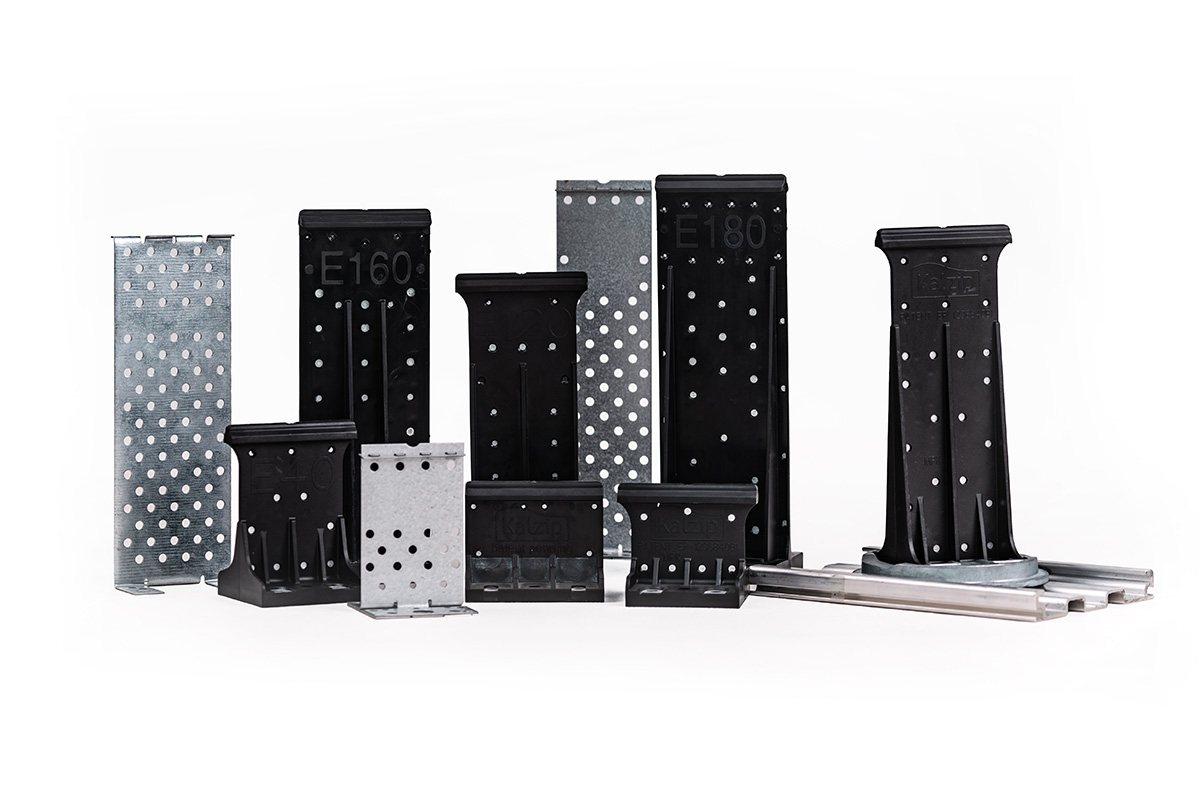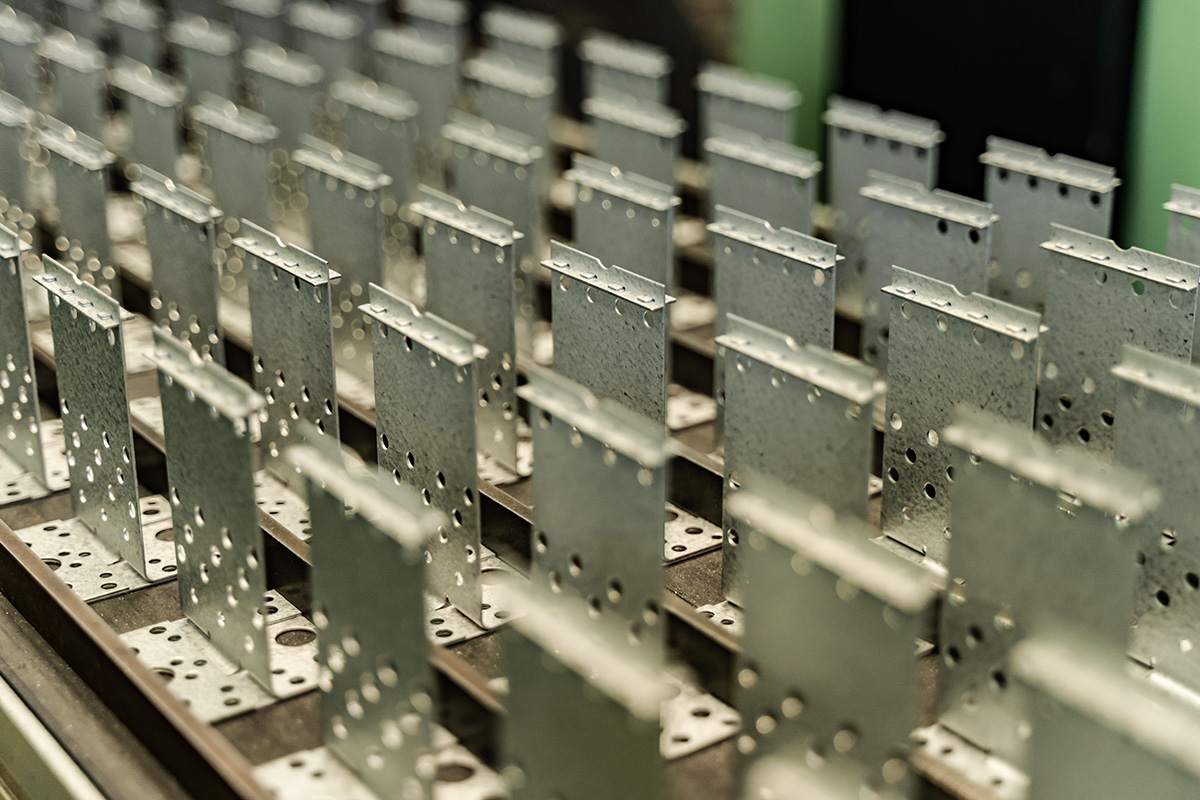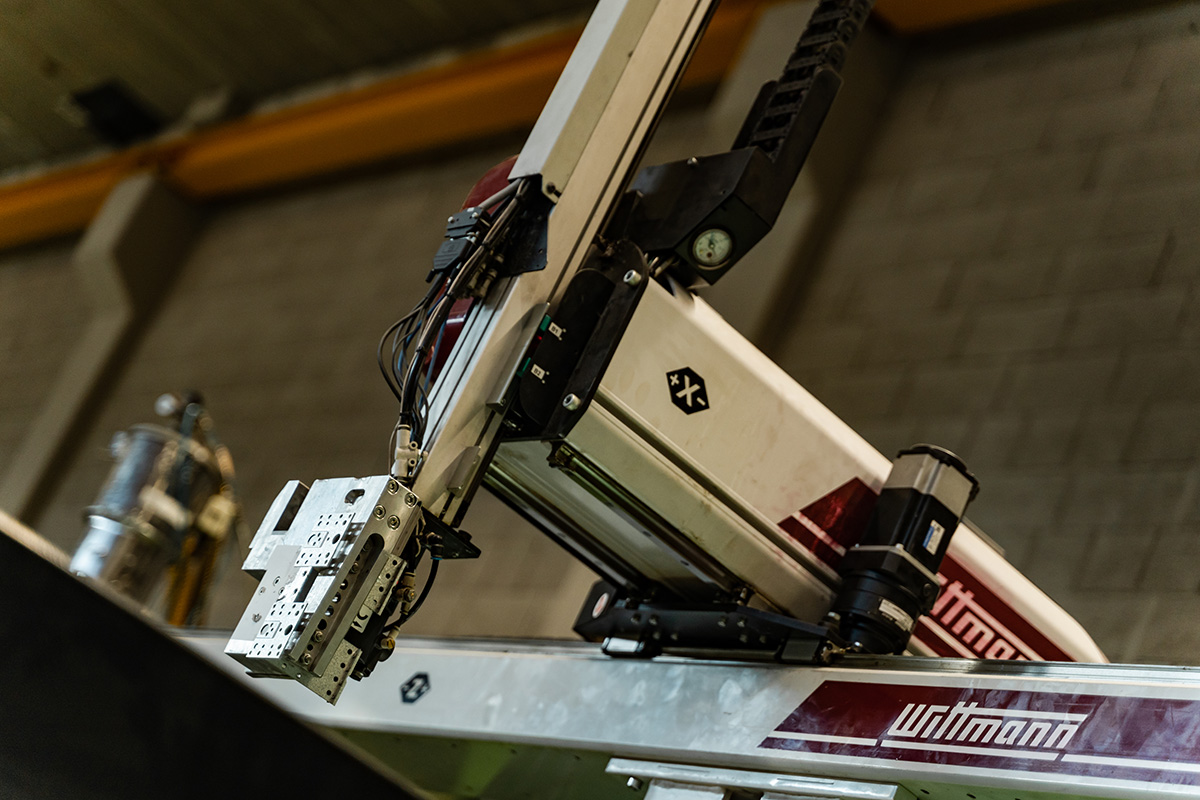The Kalzip E clip is a highly versatile component that allows the secure installation of Kalzip roof system accessories and various panels without penetrating the weatherproof layer of the roof or wall. The previously pure metal component is now overmolded with a thermoplastic outer layer, thus improving the properties of the product and reducing its production cost.

In this article we describe, how
We can combine the advantages of two materials with overmolding
Product designers often aim to use the advantages of several materials at the same time to achieve superior product quality. In most cases, this is the only way to ensure that both high quality and good properties are inherent in the product at a reasonable price. For example, in the case of threaded joints, the use of metal nuts and bolts is most advantageous, but if they only appear as inserts in the product, the other parts can be made from thermoplastics or elastomers, which are lighter, more cost-effective and easier to mold.
In case of overmolding, the carrier material is usually metal or plastic. Some products can even be produced using a special machine that automatically assembles the substrate and the injection molding material. The latter is most commonly an elastomer or thermoplastic, that improves the properties of the substrate, thereby providing
- a better grip,
- more effective insulation, and
- an aesthetically pleasing appearance.
Seam roof clips can be manufactured using 3D printing or insert molding, however using a metal frame with overmolding gives the product a stronger bond while retaining the beneficial properties of plastic, and remaining more cost-effective than a purely metal product of the same strengh.

Aluzinc coated steel plate
The production of Kalzip E clips with overmolding
The Kalzip E clip is a seam roof clip molded from polyamide on an aluminium-zinc coated steel plate. This plastic layer provides a thermal insulation effect, preventing the formation of thermal bridges.
At our Budapest production site, Mikropakk SILVER, we have been overmolding 10 types of Klazip E clips for 10 years in 10 different sizes and finishes, with a total of 1.2 million pieces produced each year.
Manufacturing and assembly of the metal part
The raw material, sheet metal, arrives in coils at our supplier, where the parts are prefabricated to shape and size. The manufacturing of the product at Mikropakk starts with the use of the prefabricated parts, that are
- riveted,
- bent and
- pressed
on our automated production line. The automatic assembly machine is capable of producing all 10 types of clips. After assembly, the plate frame is checked for faults and the inspected products are placed in boxes.

Optical inspection on a robotised production line
Fully-robotised ovemolding
Operators place the finished metal frames on a conveyor rail, which transports the product to the robots. Optical inspection was formerly performed by an operator but is now carried out on our robotic production line, which checks for the presence of the head plate and any deformations. The robot then places the metal frame in the injection mold and, after overmolding, drops it onto the ejection slide. The process ends with a check carried out by an operator, to ensure that only perfect quality products are delivered.
How we manufacture Kalzip clip products
Customised injection molding solutions and production automation at Mikropakk
We offer injection molding services at competitive unit costs for products with high technical specifications and new launches in low-volume, as well as high volume production runs.
We work with the latest technology. Our equipment is suitable for 1, 2 and 3 component injection molding, insert molding, injection blow molding and cubic technology. We prefer a solution-oriented approach, which can include expanding our machine fleet if the production of a new product requires. Contact us for more information!
